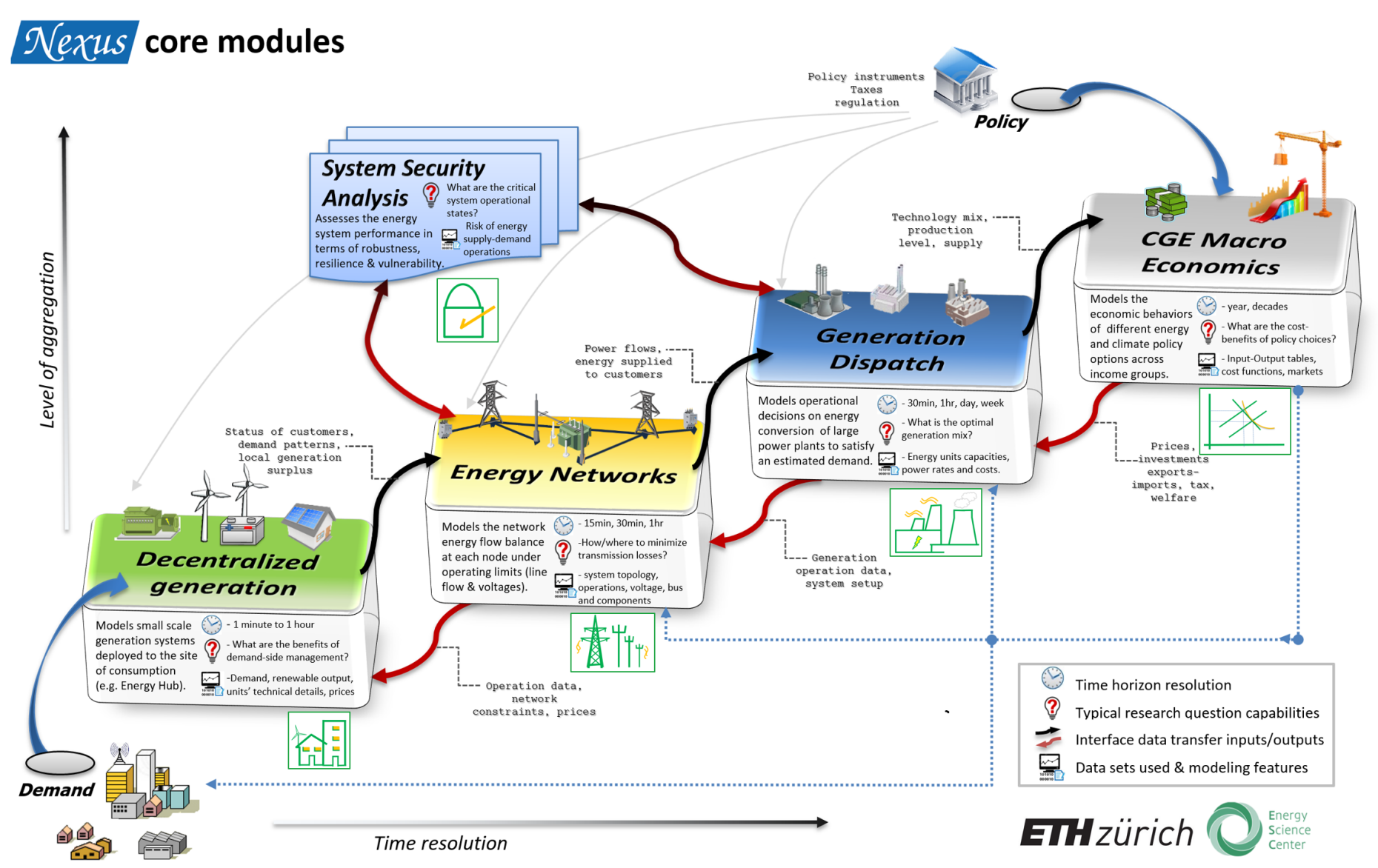Integrated Energy Systems Modelling Platform (Nexus)
The objective of this project is to develop an integrated modelling platform for assessing energy systems that cuts across the boundaries of established fields of knowledge by combining existing and new models. The Nexus project aims to study complex and interdisciplinary questions about the impact of technical, socio-economic and political decisions on the performance of the future energy system
Modelling and analysing energy systems is becoming increasingly challenging due to the growing need of representing the complexity of the system as a whole instead of merely considering its separate components. This implies capturing the interdependencies among various energy sectors and harmonizing different research viewpoints.
The Nexus Energy System model combines the strengths of top-down and bottom-up energy system modelling approaches to account for the dynamics in energy supply & demand, to represent technical features of the grid infrastructure, to provide a means for risk and reliability assessment, to capture price-based market interactions between electricity and non-electricity sectors of the economy, and to enable assessing the impacts of energy and climate policy measures (e.g., carbon taxes, emissions trading, regulatory measures) and of alternative market designs for electricity (e.g., energy-only markets, capacity or flexibility markets).
While the platform will enable studying a wide range of questions, the Nexus project is currently implementing its first case study: "The role of flexibility providers in shaping the future energy system". The objective is to analyse the mutual influences of large-scale centralized and small-scale, decentralized flexibility providers in light of a transition of the energy sector. In particular, this first case study will answer the following research questions:
- What are the needs with respect to flexibility options in a scenario with high RES deployment? Are decentralized flexibility providers (e.g. battery storage and demand-side management) an alternative to hydro storage?
- What are the parameters influencing the investment decisions for hydro storage vs. decentralized flexibility providers? What is the optimal mix of flexibility providers when assessing different policy designs (e.g. impact of subsidies)?
Nexus is a flagship project of the Energy Science Center. Nexus is composed of highly interdisciplinary team of researchers.
The following ESC members are involved: Dr. Turhan Demiray, Prof. Gabriela Hug, Prof. Marco Mazzotti, Prof. Sebastian Rausch, Prof. Giovanni Sansavini, Dr. Christian Schaffner.

